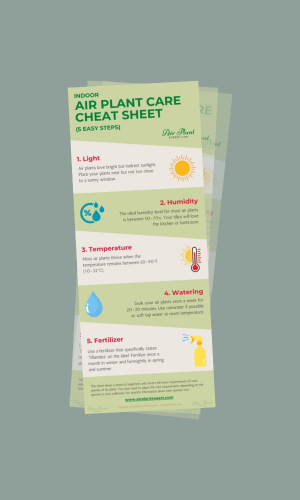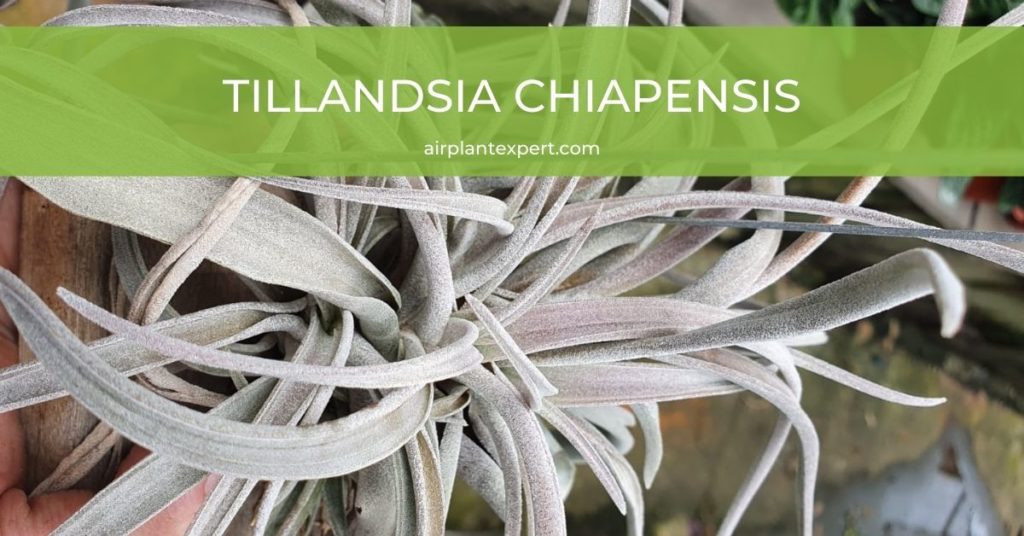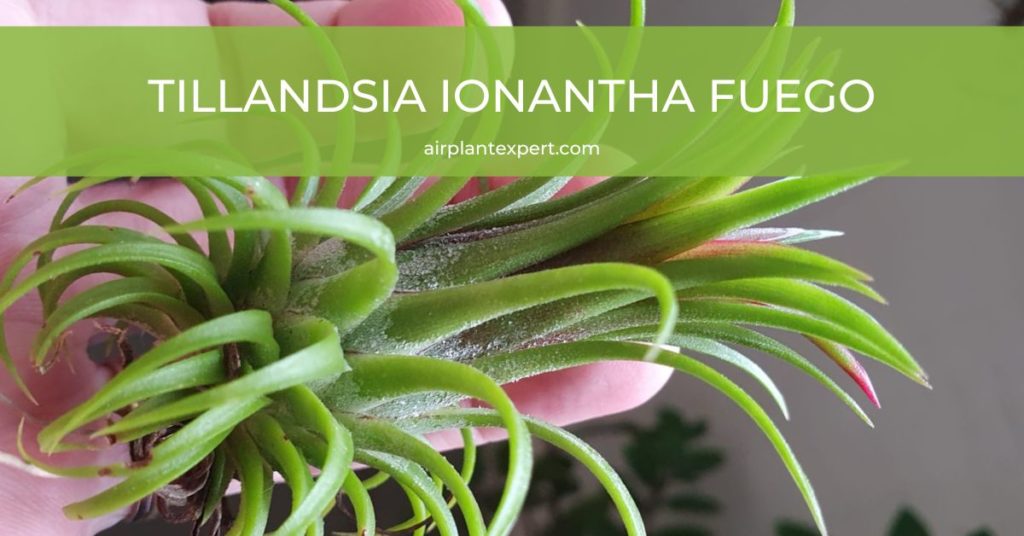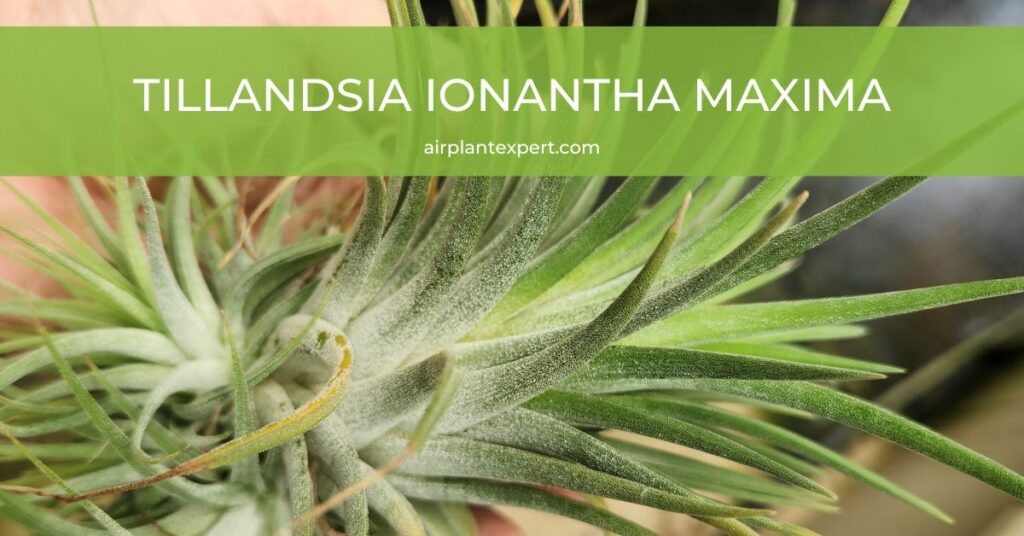Tillandsia Chiapensis’s name is derived from the Southern Mexican state of Chiapas, its native habitat. This air plant has a slow growth rate. However, its soft, velvety leaves with thick grey-green foliage are worth the wait.
Quick Guide
How to Care for Tillandsia Chiapensis
Tillandsia Chiapensis thrives in strong indirect light. It can tolerate some direct sunlight, but full sun exposure should be avoided to prevent the leaves from being scorched. Opt for a spot that provides ample light without direct exposure, especially in hotter months.
Chiapensis prefers a humid environment. Indoor conditions might require you to mist the plant more frequently to maintain adequate humidity levels, mimicking the moisture they would receive in their natural habitats.
Being adaptable, this air plant can survive a range of temperatures but favors a moderately warm indoor climate. Avoid placing your plant in conditions that are too cold or under air conditioning vents that could dry the plant out too quickly.
Be mindful of airflow and humidity indoors to keep your plants healthy. Outdoors, they should be shielded from harsh weather for optimal health. The key is balancing their need for moisture, light, and warmth.
How to Water Tillandsia Chiapensis
To properly hydrate your Chiapensis, I recommend submerging it in a bowl of water for approximately 20-30 minutes. This should be done roughly once a week, ensuring the water is at room temperature to prevent shock to the plant.
After soaking, gently shake off excess water and place the plant upside down to avoid water accumulation at the base, which could lead to rot.
Post-soaking, the plant must be allowed to dry completely within 4 hours. This step is crucial as residual moisture can encourage mold and rot. Place your Tillandsia in an area with good air circulation to expedite the drying process.
Rainwater is best but you can use soft tap water. Many people also use aquariums, pond, or spring water. Don’t use distilled water as it doesn’t contain any nutrients and can harm your plants.
If you live in an arid environment or your home has low humidity, supplemental spraying can help. Using a spray bottle, give your plant a heavy misting to rehydrate the leaves if your plant appears to be drying out too quickly in between soakings.
Always ensure the water you use is free of chlorine and other chemicals that can harm the plant. Keep an eye on the foliage – when it starts to curl or roll, it’s an indication the plant needs extra water.
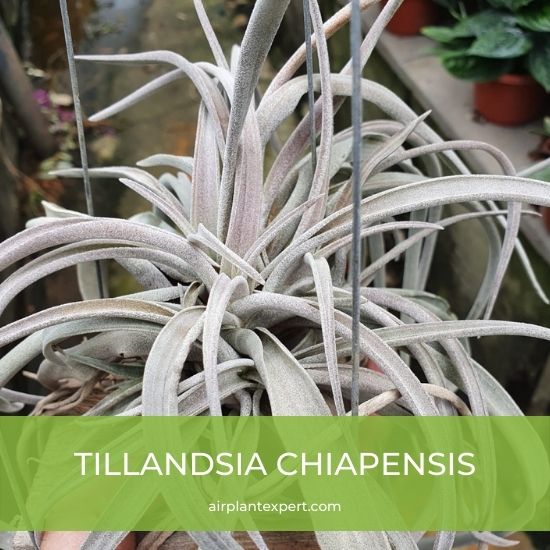
How to Propagate Tillandsia Chiapensis
Propagating Tillandsia Chiapensis, which is a rewarding experience for air plant enthusiasts, can be done through two main methods: offset division and seed propagation. Both methods allow you to multiply your collection and enjoy the beauty of new plants over time.
Chiapensis produces offsets, commonly referred to as pups, after the parent plant has bloomed. The pups form around the parent plant’s base and can be separated from the mother plant once they reach a decent size.
Here’s a quick guide:
- Locate the pups at the base of the mother plant; they will typically appear after the plant has flowered.
- Once the pups are about one-third the size of the mother plant, you can gently separate them using your fingers or a pair of clean, sharp scissors.
- The pups can then be mounted or placed in a well-ventilated area with bright, indirect light. Then follow the typical air plant care routine to encourage growth.
While less common due to the lengthier process, growing Chiapensis from seed allows the emergence of genetic variation, potentially resulting in unique cultivars. Once pollination occurs, the plant will eventually produce seed pods.
When the pods dry out and split open, the seeds can be harvested. Sow the seeds on a fine, grainy substrate, moss, or even a paper towel and water sparingly by misting. Keep in mind that from seed to a mature plant can take several years.
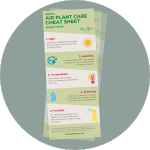
Get Your FREE Air Plant Care Cheat Sheet
5 easy steps to keep your air plants happy and healthy.
Flowers and Expert Tips
In bloom, Tillandsia Chiapensis is especially striking, showcasing a sizable pink inflorescence that can grow to twice the size of the plant itself, punctuated with deep violet flowers that add an exotic touch to any collection.
As you continue to explore the world of Tillandsias, you’ll find that the Chiapensis variety offers both a striking aesthetic and an intriguing example of botanical adaptation and resilience. I love this species of air plant!
If you’re lucky enough to own this air plant, anticipate a stunning floral display during its bloom cycle. The inflorescence consists of bright floral bracts from which the flowers emerge.
Typically, these bracts are a radiant red or pink, while the flowers are unmistakable purple and tubular-like. The flowers can last for several months.
If you’re using rainwater to water your air plants that should provide sufficient nutrients most of the year round. However, as the growing seasons approach fertilizing your plants on a fortnightly basis can encourage blooming, but be careful as you don’t want to over-fertilize.
Tillandsia Chiapensis Hybrids
Tillandsia Chiapensis is a distinctive member of the genus Tillandsia and offers a stunning array of hybrids that appeal to enthusiasts for their interesting genetic diversity and unique characteristics.
These are some of my favorite hybrids.
- Tillandsia Chiapensis ‘RL’ (by RL Frasier)
- Tillandsia ‘Queen’s Delight’
- Tillandsia ‘Screwball’
- Tillandsia ‘Gigantesco’
- Tillandsia Chiapensis x Rothi
- Tillandsia Chiapensis x Caput-medusae.
A highly sought-after hybrid, Tillandsia ‘Queen’s Delight’ is a truly captivating air plant. The salmon pink-colored floral bracts and violet blooms give a magnificent look to this air plant. This hybrid is relatively simple to cultivate and has standard requirements.
The origin of Tillandsia Chiapensis x Rothi is still unknown. It has broad silvery leaves and a slightly bulbous base. Its inflorescence matches the size of the plant, boasting bright red floral bracts with violet flowers.

